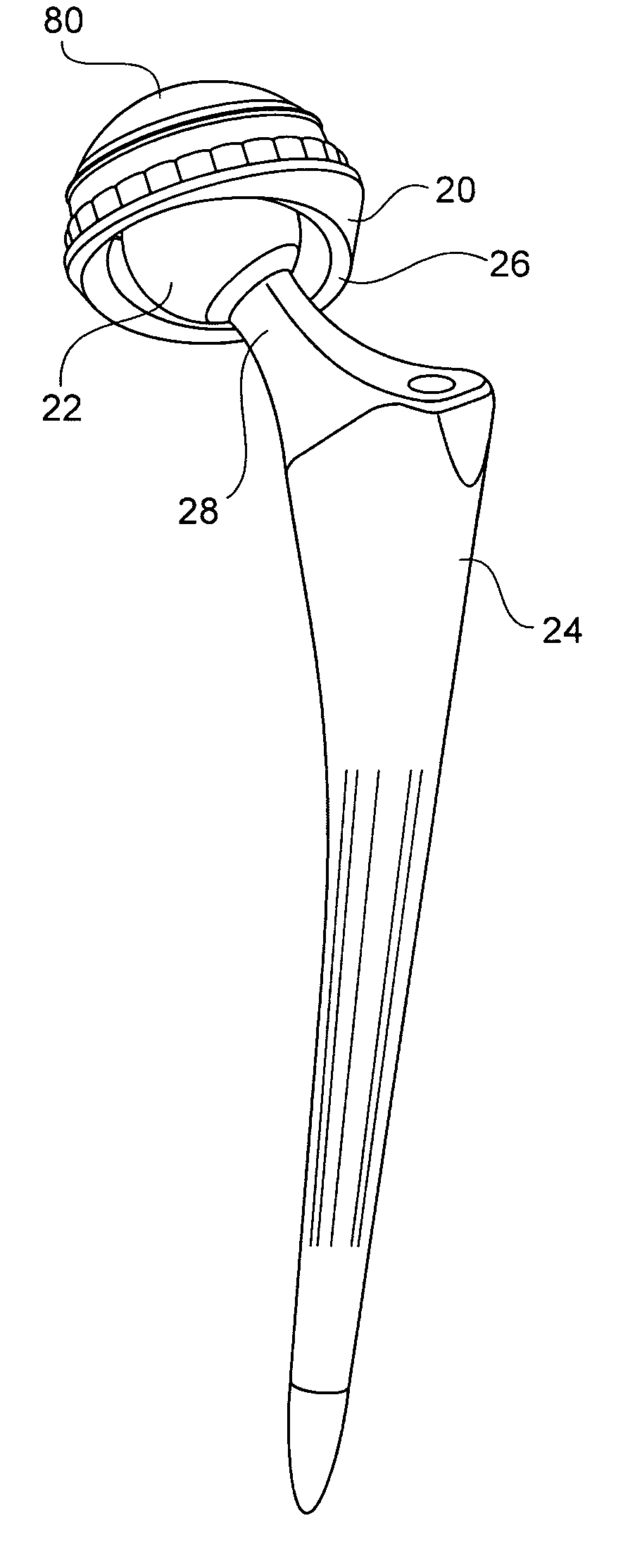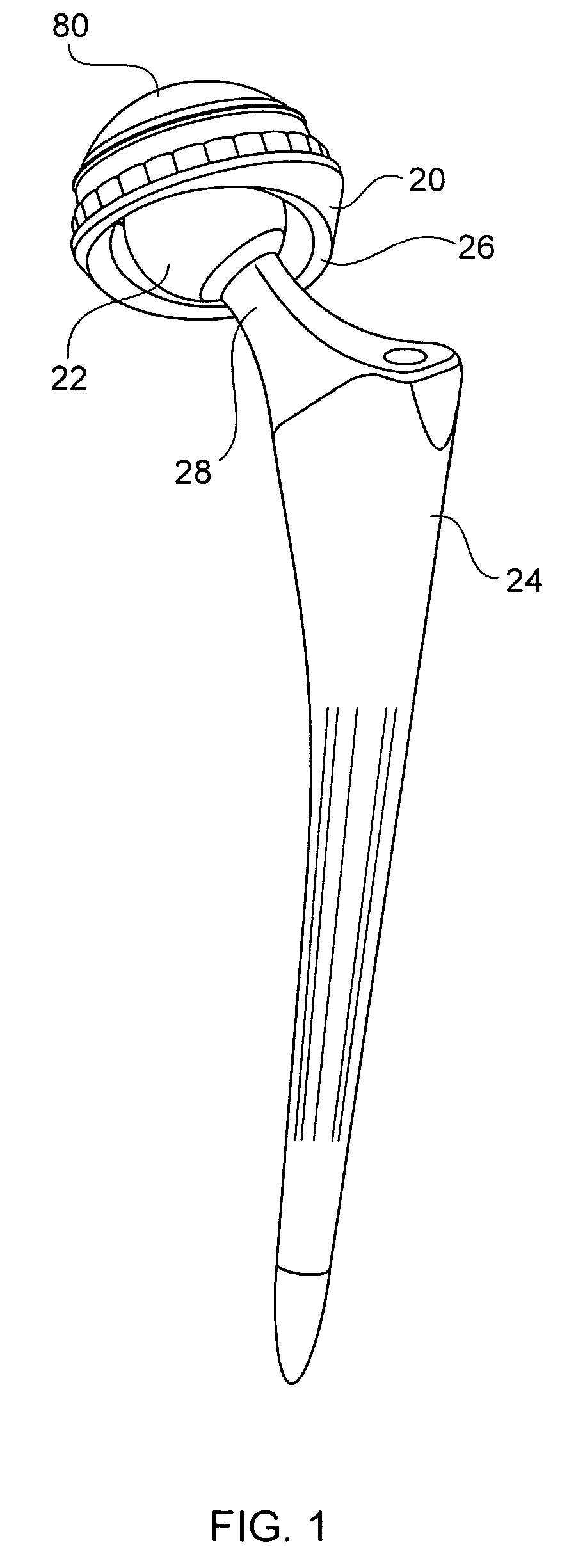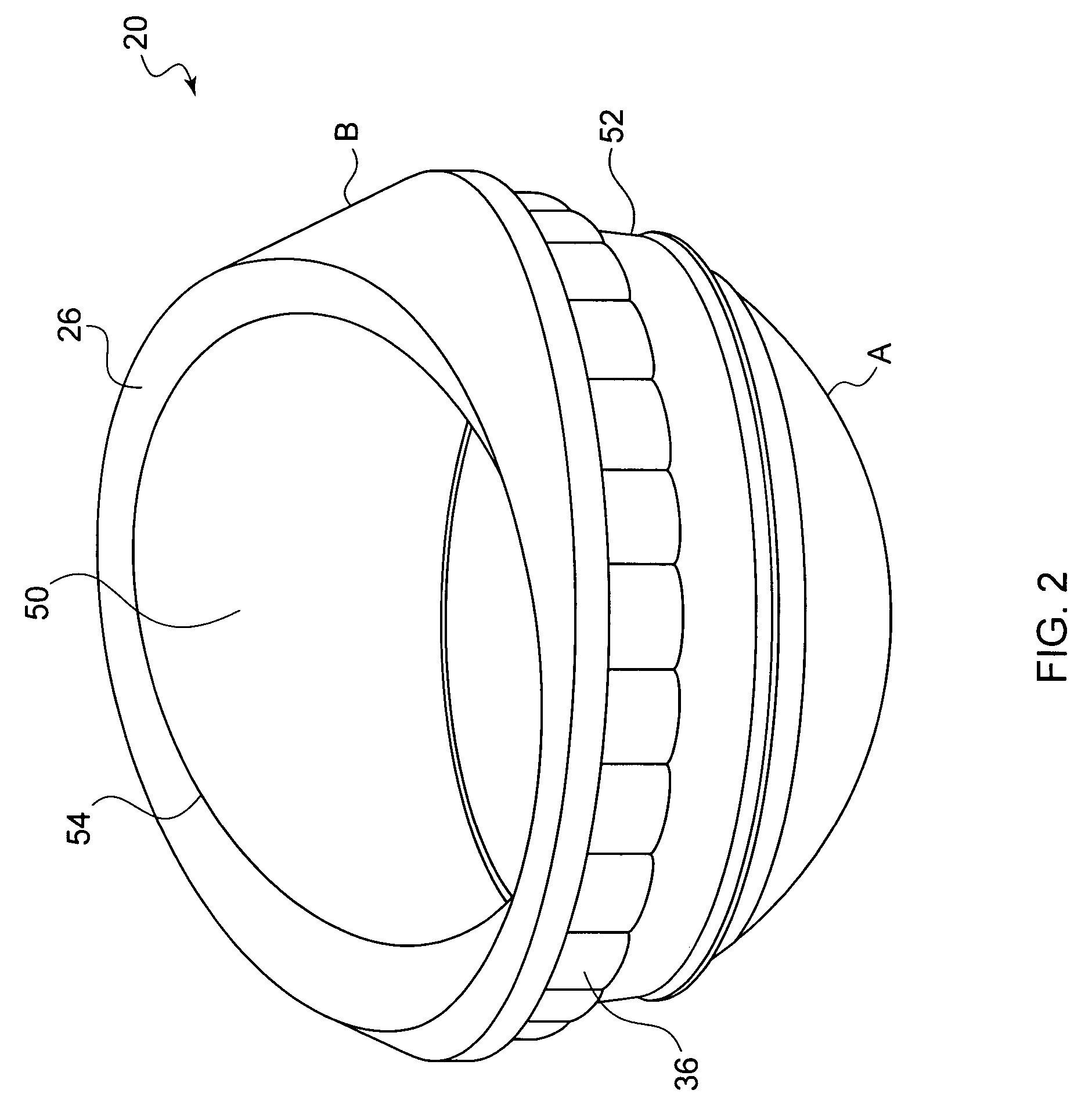Variable geometry rim surface acetabular shell liner
a technology of acetabular shell and rim surface, which is applied in the field of acetabular prosthetic devices, can solve the problems of difficult and often imprecise fine tuning of the positioning of the acetabular component during the intraoperative assessment of range of motion and stability, and reducing the likelihood of dislocation or subluxation. , to achieve the effect of minimizing interference with the neck, maximizing the range of motion, and increasing the range of motion
- Summary
- Abstract
- Description
- Claims
- Application Information
AI Technical Summary
Benefits of technology
Problems solved by technology
Method used
Image
Examples
Embodiment Construction
[0070]Methods and structures according to this invention seek to improve the range of motion of the femoral component of a hip prosthesis by varying the rim surface geometry of the rim of an acetabular shell liner in which the femoral component articulates, and particularly the rim geometry of a constrained liner. Varying the geometry of the rim surface relative to the internal concave surface opening or axis of the liner at different areas on the liner allows for optimization of the rim surface geometry, thus providing an increased range of motion. Liners with variable angle chamfer surfaces according to various embodiments of this invention have an overall range of motion generally at least comparable to a conventional constant geometry rim surface constrained liner.
[0071]Optimization of the acetabular shell liner rim surface geometry takes consideration of many elements in the design of the liner, including, but not limited to, range of motion of the femoral component, rotational...
PUM
 Login to View More
Login to View More Abstract
Description
Claims
Application Information
 Login to View More
Login to View More - R&D
- Intellectual Property
- Life Sciences
- Materials
- Tech Scout
- Unparalleled Data Quality
- Higher Quality Content
- 60% Fewer Hallucinations
Browse by: Latest US Patents, China's latest patents, Technical Efficacy Thesaurus, Application Domain, Technology Topic, Popular Technical Reports.
© 2025 PatSnap. All rights reserved.Legal|Privacy policy|Modern Slavery Act Transparency Statement|Sitemap|About US| Contact US: help@patsnap.com



